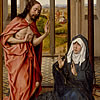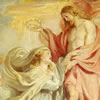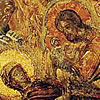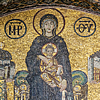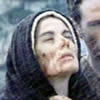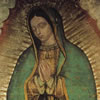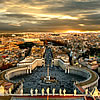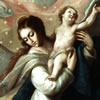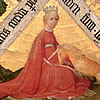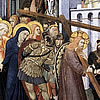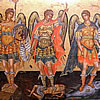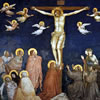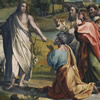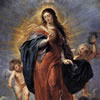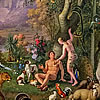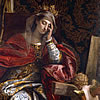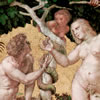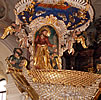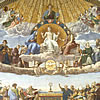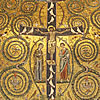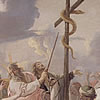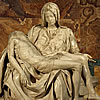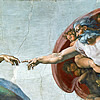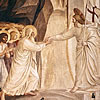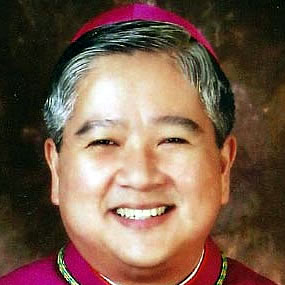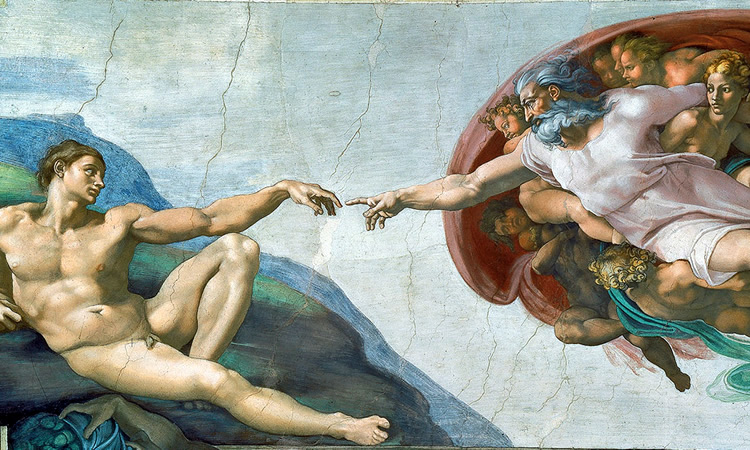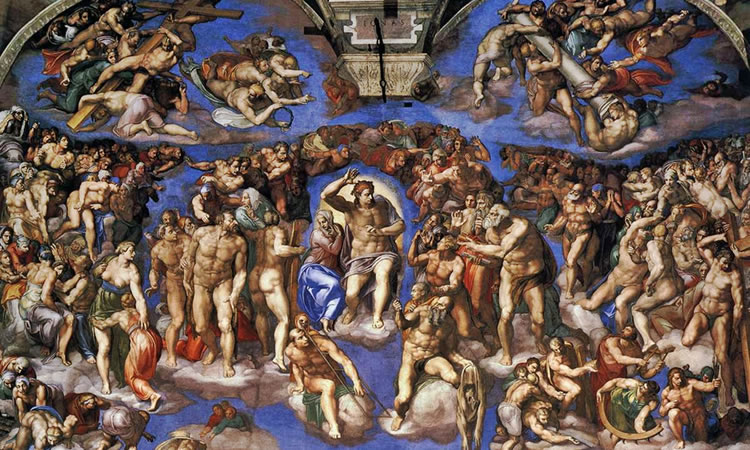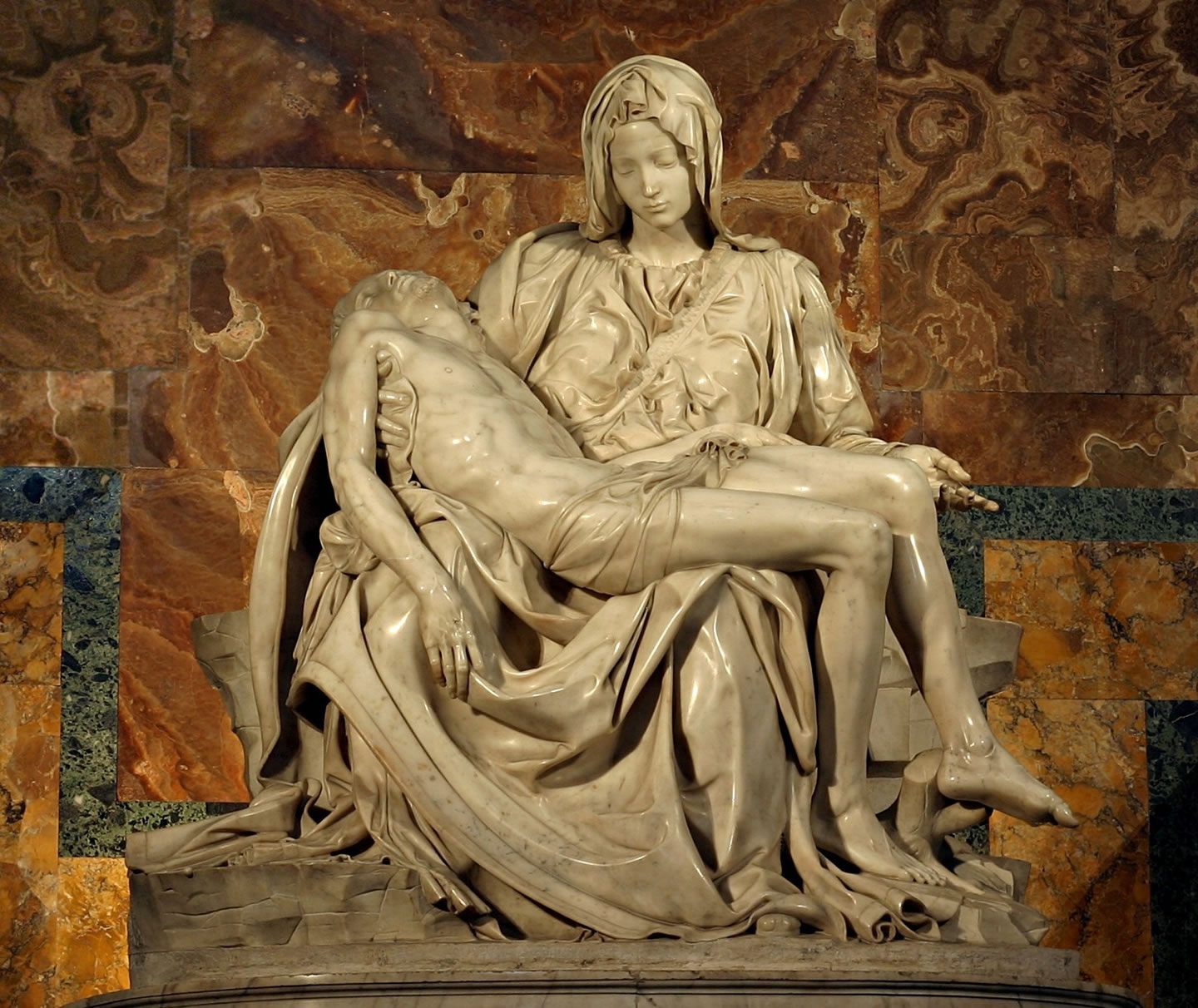

What we can learn from the Pieta
Michelangelo’s La Pieta must be one of the most renowned sculptures in the world and of all time. It is a Renaissance piece made of Carrara marble that depicts Mary with her son, Jesus Christ, on her lap after he was taken down from the cross. We see in her face a dignified and serene sorrow that we can’t but have pity on her – and that is what La Pieta means, “the pity.”
A Youthful Appearance
The critics of the sculpture frown on it because Mary was depicted as young as if she was the same age as Christ at the time of his death. Scholars think Mary must have been around fourteen when she conceived Jesus, so that would make her almost fifty years old when Christ was crucified.
Michelangelo defends his choice of portraying her youthful appearance as his way to symbolize her incorrupt purity. Catholics believe Mary was conceived immaculately. That means she did not inherit the stain of original sin. In the original plan of God, humankind was not supposed to suffer disease, bodily decay, and death the way we know it. Our nature was meant to be perfected by God’s grace.
When Adam and Eve rejected God through their disobedience, God gave them what they wanted – a life without him. Sadly, because grace is dependent on God, when they lost God they also lost this grace. All humans inherited this lack of grace. However, to make Mary a fitting vessel for God, she was “cleaned” of this stain. The technical way of understanding this is that God prevented her from being touched by the stain of original sin.
It makes sense in several ways. One is that all the temple vessels were cleaned before they were used. Since Mary was to be a vessel for God himself, it makes sense to clean her first. Another is that God is Lord of all. That also goes for the devils even if they don’t like it. The stain of original sin is a mark of the devil’s influence. It would be absurd that the devil would have any influence over the mother of God directly or indirectly through the stain of original sin. This is what Catholics believe.
With that as a background, it isn’t difficult to understand why Michelangelo chose to depict Mary as someone whose body did not deteriorate with age – simply because her body could not be touched by disease, decay, and death.
Queen of Martyrs
A martyr is someone who gives their life to give witness to Christ. Saint Stephen is the first recorded martyr when he was stoned to death by the Jews. All the apostles, save St. John, died as martyrs. Peter was crucified upside-down during the reign of Nero, while his brother, Andrew, was crucified on a cross that resembled an “X”. James was beheaded by Herod Agrippa. Philip was scourged, imprisoned, and crucified. Simon the Zealot was also crucified. Bartholomew was skinned alive. Thomas and Matthew were stabbed. Jude and James the Less were beaten to death. Matthias, the apostle who replaced Judas, is said to have been crucified or hacked to death.
One of the titles of Mary is Queen of Martyrs. It is one of those titles with double meanings. The first is that she is the person whom martyrs recognize as their queen. The second meaning is that her martyrdom is high above the other martyrs (the same way we use “queen” to say the rose is the most beautiful of all flowers when we call it the “queen of flowers.”)
How is Mary a martyr? Saint Bernard said that the Passion of Jesus began with his birth but with Mary, it began during the Annunciation. When Mary gave her fiat, she gave up the simple life she wanted to live. When she brought the child Jesus to the temple, it became clear that difficulties would be part of her life when the prophet Simeon told her “your own soul a sword shall pierce.” Those that study Mary’s life count seven swords or sorrows starting with that of Simeon’s prophecy. The next sorrow is when she had to escape with Joseph to Egypt, fleeing from the assassins of King Herod. The third is when she lost Jesus in the Temple – one can only imagine her worry as a mother. The fourth is when she met Jesus as he carried the cross. Fifth is his crucifixion and death. As if his death were not enough, a soldier had to pierce his side – which is the sixth sorrow. Finally, the last sorrow is the burial of Christ – the definite moment when she had to physically detach herself from the person she dearly loved.
That Mary participated in her son’s passion is one of our Catholic traditions. Many saints agree and have said or written beautiful things about it. Saint Pope Pius X said, “It was in the presence and under the very gaze of Mary that the divine sacrifice of our redemption was consummated; she took part in it by giving to the world and nourishing the divine victim…” Saint Alphonsus Liguori wrote extensively on Mary’s sorrow and said, “Mary’s martyrdom surpassed all others; for it was longer than that of others, and her whole life may be said to have been a prolonged death.” Saint Antoninus said, “the sight of her son’s torments brought more grief to her heart if she had endured them all in her own person… she consummated her martyrdom by sacrificing the life of her son, a life which she loved far more than her own, and which cause her to endure a torment which exceeded all other torments ever endured by a mortal on earth.”
The theologian, Richard of Saint-Laurent, suggested that never was there a mother who more tenderly loves her son than Mary does with Jesus. Even if it sound like pious talk, it stands up to theological reasoning. True love can come from someone who has no bias, no limits, no constraints, and full knowledge of the person being loved. Since Mary was created without the stain of original sin, she must have infused knowledge that prevented her from any sort of bias (something that was lost for the rest of us as a result of original sin.) Her body was in union with her will in full service to God. And until Christ earned sanctifying grace for mankind so we can be “re-attached” to God, it was only Mary whom we can say knew Christ more intimately than anyone for she shared his divine nature from the moment of her conception. She had the Holy Spirit dwelling within her that could love like God loves. So when Jesus was tortured, crucified, and buried, there could be no other grief like that of his mother. Richard of Saint-Laurent very eloquently expressed this when he said, “since there never has been in the world love like Mary’s love, how can any sorrow be found like Mary’s sorrow?” St. Alphonsus adds that because Mary loves Jesus greater than any other, “the more bitter and inconsolable was her grief.” Therefore, there can be no martyrdom greater than this.
In art, we see martyrs depicted with the instruments of torture used on them. Saint Andrew with a cross, St. Laurence with a gridiron, Saint James the Lesser with a club, Saint Simon the Zealot with a saw, Saint Bartholomew with his flayed skin, Saint Catherine with a spiked wheel, and Saint Sebastian with arrows, to name a few.
The Pieta of Michelangelo shows Mary with the instrument that wounded her the most – the dead body of her beloved son. Saint Alphonsus Liguori quoted Diez who said, “Martyrs are represented with the instruments of their suffering… Mary is represented with her dead son in her arms; for Jesus himself, and he alone, was the instrument of her martyrdom, by reason of the love she bore for him.” One must look at the opened hand of Mary in the Pieta for it presents the dead Christ to the viewer. Her hand quietly gestures, “Look, at what my son has done for you.” It also proclaims, “This is what I have suffered.”



